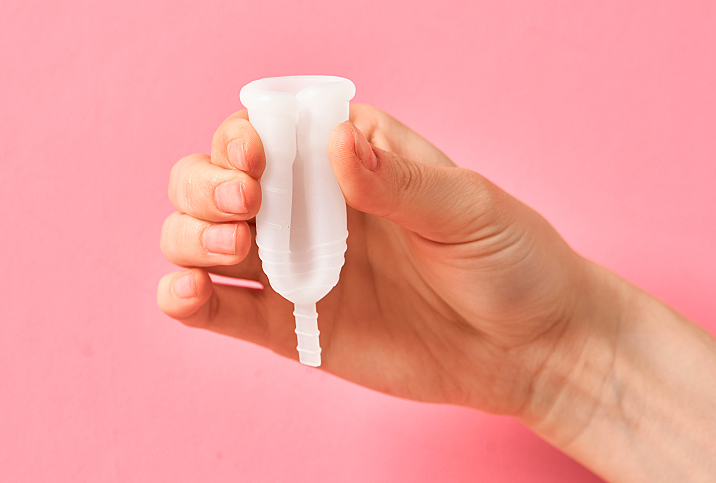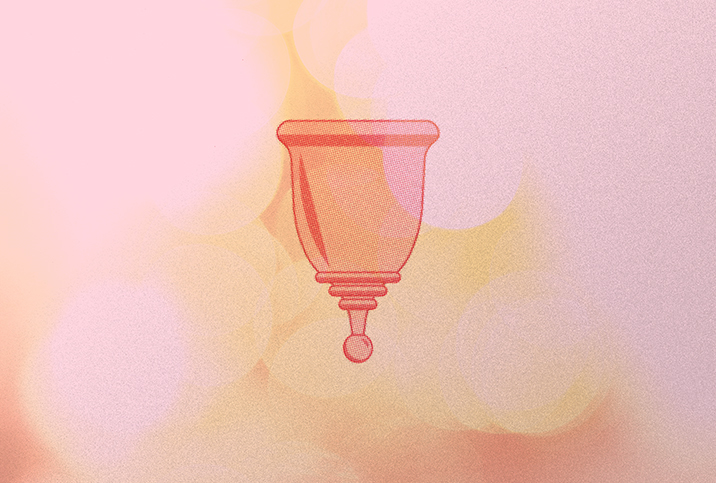What to Look For in a Menstrual Cup

While menstrual cups have been around since the 1800s, they've become especially popular in recent years. They are reusable, which is a positive in an eco-friendly world, and more cost-effective than other menstrual products. Plus, they offer convenience. Depending on your flow, a menstrual cup only needs to be dealt with every eight to 12 hours, versus having to change a tampon or pad every four to six hours.
With hundreds of menstrual cups available, how can you choose? The type of cup that's right for you has to do with several factors. Some are made from rubber, while most are 100 percent medical-grade silicone. The height of your cervix (low or high) and width of your vagina factor in, as does your general flow and basic experience with menstrual cups. Overall value, both in terms of cost and environmental issues, may be a consideration for you as well.
Best for beginners
Beginners benefit from having a cup that's easy to insert, stays in place and can be removed with relative ease. It takes a little practice to be able to maneuver a cup with minimal mess, so using a cup with a stem (designed with the beginner in mind) can make all the difference.
Vaginal width
Larger-sized cups are appropriate for those who have given birth vaginally, while smaller sizes are better for those who haven't. If you use a cup that's too small for you, you risk having it fall out. If you use one too large, it may bend over on itself, leading to possible leaks.
Our top pick for this category is any cup that comes in both large and small sizes, and features an easy-to-insert, comfortable bell shape and a long, ridged stem for easy removal.
Cervical height
Whether your cervix is high or low will play an important role in the type of cup that will work best for you. For a low cervix, smaller, bell-shaped cups work best. For a high cervix, you'll want to choose a longer, V-shaped cup that will be easier to reach when it's time to remove.
If you're unsure how high your cervix is, you can easily find out by squatting and putting a freshly washed finger inside your vagina. Once you feel something firm (as opposed to the spongy feel of the vagina), you've likely found your cervix. If you can barely reach your cervix (2.25 inches or higher), you have a high cervix. If you found your cervix near the vagina opening (within 1.6 inches), you have a short cervix. Ask your doctor if you have any questions, and remember your cervix does move throughout your menstrual cycle.
Our top pick cups for lower cervixes include ones that are rounder than other cups, or that feature a long stem with trimming notches. For higher cervixes, we like the cups with a stem with rings for easy gripping, or that has a stem with a ball on the end, making it easier to grasp.
Heavy flow
Some women with heavy flows worry a menstrual cup won't hold as much liquid as disposable options. However, most cups are designed to hold about an ounce of liquid—about twice as much as a super tampon.
Our top picks for women with heavy flows include cups featuring an extra-thick rim for containing liquid, or that are specially designed to accommodate a large flow while maintaining a comfortably small shape.
Best value
One of the main benefits of using a menstrual cup over disposable tampons and pads is that it will save you money over time. Most cups are priced to "earn out" what would have been spent on pads or tampons within three months of acquiring them, but price isn't everything. Value means you're buying something that is going to last, sometimes even for years, and something that makes a positive environmental impact.
Using a menstrual cup is a great option for many women but is not recommended if you have an IUD as it can possibly tug on the string and displace the device. Additionally, the cup is not recommended if you have a dropped uterus or uterine prolapse as these will affect how the cup sits in your vagina.


















